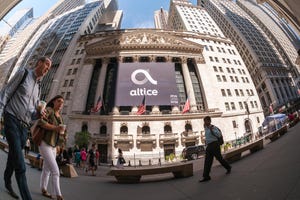IPO Nostalgia
IPO Nostalgia -- R. Scott Raynovich
November 30, 2000

 My, times have changed. And I'm only 33.
My, times have changed. And I'm only 33.
Just a short while ago an emerging technology market would start with a handful of venture capitalists all getting the same idea in the same breakfast meeting in a place like Palo Alto, Calif., or Cambridge, Mass.
Then, the VCs, who have an uncanny ability to psychically broadcast their thoughts to all of their peers, would start seeding dozens of players in an emerging technology area. These companies would then fight tooth and nail, over a period of years, for market share and profitability -- in the private market. Then, after several years of trial and error, and several quarters of profitablity, the VCs would march down to Wall Street to sell their wares, and the bankers would consider taking the cream of the crop public.
No, senility has not got the better of me: Companies in the old days really required profitablity to go public. This, kids, was way back in the early 1990s.
In the last two years, we saw an elimination of the middle stages of the IPO process. Wall Street stripped out the requirement for profitability -- or in many cases, even the requirement for revenue -- and took a larger majority of the companies straight to the public markets. The VCs had a field day. Selling companies to Wall Street was as easy as stuffing ballot boxes in Dade County.
What you see on the Nasdaq screen, today, is a byproduct of this process. As Wall Street has become more aggressive in bringing companies public, more risk has been transferred into the hands of public investors. The market is now demonstrating a delayed auto-immune response to perpetually increasing risk. In other words, it's throwing up.
To my mind, the risk curve peaked in July of this year, when Corvis Corp. (Nasdaq: CORV), a promising optical networking technology company founded by former Ciena founder David Huber, went public without any revenues and certainly no promises of profit on the near horizon. The IPO was really a $1 billion venture capital round, funded out of the wallets of public investors, at a valuation that would make any real VC cringe. Wall Street quickly (within a week) bid Corvis up to a $37 billion market cap.
Corvis, of course, is no slouch. It has always been thought of as a "hot" company with blockbuster potential. That's not the point. The real question is whether it was ready to be funded out of Grandma's 401K account.
In retrospect, unless Grandma is a highly risk-tolerant investor with a savvy knowledge of long-haul optical networking technology, the answer is most certainly no. Recently, bankers, speaking to Light Reading under the cloak of anonymity, have admitted they may have shuttled Corvis out to the public with only the most cursory glance at the prospectus (see Corvis: Time to Come Clean? and Life After Corvis). It's David Huber, they said. Why not?
Today Corvis is trading at a $9 billion market cap, having been reduced to less than one-third of its value in the five months following the IPO, and to date it has booked some $25 million in revenue. Granny took a bath.
The Corvis IPO, more than any others, is now a symbol of the extremes tested by Wall Street. Following the recent collapse of the technology markets, the IPO market has certainly become more selective. Will we return to taking only profitable companies public? Probably not. But reckless and greedy IPOs with irrational valuations will be tempered, or even turned away at the door. And this is a good thing.
The question to ask yourself now is not about Corvis. A company of that pedigree could probably always find a way to go public regardless of market conditions -- and it now has $1 billion in cash and several years to prove it can still grow into its valuation. The question now is about young startup companies that still have IPO dreams. What becomes of a Cyras Systems Inc.? How about a Pluris Inc.? Astral Point Communications Inc.?
The answer is: The management teams should absolutely forget about the IPO market and buckle down on a mission for customer satisfaction and profitablity. The question they should be asking is not 'When's the IPO?' but 'Where are the customers and the path toward profitability?'
So, what now? When Wall Street gets gloomy, it dwells on risk and becomes increasingly pessimistic. Remember that the market is very short-sighted, so keep your eye on a two- to three-year time frame. Can the Nasdaq go to 2400? It's possible. Will it go to zero? Definitely not. Will it eventually rise to new heights within the next five years? History says the probability of this is extremely high.
Markets rise and fall, and real businesses don't care. They get lean and tough and survive.
Hopefully, the paranoia in the markets will require bankers and analysts to go back to more rigorous due diligence. Does this company really have the right technology? Are the management credentials bullet-proof? Does it already have customers and a clear path to profitability?
We can get back to the basics of technology investing and look for profitable ideas with rock solid management teams and crystal clear marketing strategies. You know: companies that have named their customers before they've put together their S-1. Remember those days?
And the snow we had! It was up to here, I swear...
-- R. Scott Raynovich, executive editor, Light Reading http://www.lightreading.com
You May Also Like

.jpg?width=300&auto=webp&quality=80&disable=upscale)








